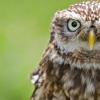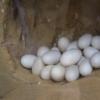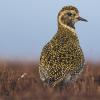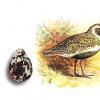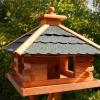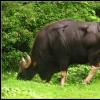Alternantera: photo, description. Alternantera sessile Alternantera sessile outdoor herbaceous plants
Perennial decorative - deciduous herbaceous plant or shrub with beautiful leaves, painted in various shades, including plain or variegated. It is also used as an aquarium plant, water shore plant, houseplant and a garden plant (depending on the species). The small flowers of the alternantera do not have a decorative function, as such. In nature, the plant is found in tropical and subtropical climates. Strongly branched stems give it the appearance of a small shrub. To maintain the bright color of the leaves, the alternantera needs the most sunny location, as the color of the leaves fades in the shade. The plant is not frost-resistant, therefore, in regions with a cold climate, it is taken away for storage in a room with an air temperature in the range of +14 - +16 C °. If you do not have such an opportunity, you can grow an alternantera as an annual. Growing, it forms thick carpets, while perfectly tolerates the shaping haircut, which is necessary for good thickening. In regions with a warm climate, Alternantera can remain in the garden for the winter, but with good shelter, as the plant is afraid of even short-term frosts. Due to the bright varied color of the leaves and low growth, the alternantera is used in the creation of figured flower beds or flower drawings, used for rock gardens, borders, alpine slides, as a ground cover, as well as for decorating the banks of reservoirs (mainly sessile alternantera) and aquariums.
Alternantera aquatic species. Some types of alternantera are aquatic plants, so they are used for planting in aquariums or ponds. For example: sedentary alternantera (alternanthera sessilis), Reineck's alternantera (alternanthera reineckii).
Room Alternantera. Most often, the following varieties are used for growing in a room: Anabillis, Sessilis, Rosea. Growing a room alternantera is not difficult and the plant in room culture is considered quite unpretentious.
Growing Alternantera. The plant requires constant moderate watering. To save the plant until the next season, it must be taken indoors for the winter, and in areas with a warm climate it is good to cover. For sufficient thickening, the alternantera regularly needs a shaping haircut (shortening the shoots). To decorate the shores of reservoirs, they mainly use the sedentary alternantera. To do this, the pot with the plant is placed at a depth of no more than 50 cm. The main thing is to have time to bring it back before the autumn frosts. In winter, the optimum temperature is +14 - +16 C°, and in summer +18 - +28 C°. A pot with a plant is placed on the brightest window with direct sunlight. The earth must not dry out. In the period from February to August, you need to make complex mineral and organic fertilizers with a frequency of 1 - 2 times a month. A potted alternantera is transplanted every 2 years in the spring. The ideal soil mixture for a plant is a combination of sod, leafy, humus soil and sand in equal proportions. Also, a mixture of garden soil with peat and sand is suitable.
Height: 10 - 50 cm (depending on the type).
Location: maximum light.
Foliage color: olive-green, yellow-red, different on different sides of the leaf, green-red-orange, pink.
Temperature: does not tolerate even short-term frosts.
Reproduction: division and cuttings.
|
|---|
Alternantera sessile is common in the tropics. A long-stemmed, undemanding plant, popular for its pink-green to purplish-red leaves. Alternantera sessile grows confidently both in a deep aquarium and in a humid greenhouse. On land, growth rates are noticeably faster, but the plant loses its attractiveness to a large extent. It is necessary to gradually transfer the alternantera from an underwater form to an aboveground one. Seasonal fluctuations in the growth rate were not observed.
Comfort parameters: water temperature 22-28°C. In cold water, the growth of the alternantera slows down sharply. Hardness and active reaction of water do not have a significant effect on the state of the plant. Preferably soft water with a slightly acidic reaction, in which the sessile alternantera develops more confidently. It is necessary to change a fifth of the volume of water once a week.
The lighting is bright - 0.75 W / liter. The intensity of the light determines the color of the leaves: the brighter the light, the more noticeable the red tones. The plant is content with natural and artificial lighting. For artificial lighting, a combination of incandescent and fluorescent lamps is preferred. Fluorescent lamps of the LD type should not be used: the spectrum does not suit the plant.
The roots of the sessile alternantera are weak, so the nature of the soil does not play a role. You can use any substrate, we recommend coarse sand. Siltiness is moderate or weak. A 2 cm layer of soil in the aquarium is enough for the growth of the alternantera.

Breeding Alternantera sessile
Alternantera sessile is propagated by cuttings. Long stems that reach the surface of the water are shortened. The cut top is planted in the ground, deepening the lower whorl of leaves. After a few days, the plant will form roots. Long stems are divided into parts, with each stalk with 3-4 whorls of leaves. Such a seedling can be immediately stuck into the ground, without leaving water on the surface and without waiting for the roots to appear in the axils of the leaves. Cuttings left to float grow worse than those planted in the ground.
Planted in a shallow aquarium, the plant easily forms aerial shoots, which are separated and planted in flooded or moist soil. In the greenhouse for the sedentary alternant, garden soil is used, the basis of which is sand and peat. The temperature is in the range of 26-30°C, the lighting is bright. The ground-grown Alternantera sessile easily tolerates flooding. The plant can be almost painlessly planted in the soil of the aquarium, where after a short time the growth will continue.
Latin name Alternanthera sessilis.
Alternantera is a charming and immediately eye-catching plant. This is a red, blazing fire in the underwater kingdom.
The plant looks great in a variety of aquascapes, as a rule, this plant is used as a focus point. Some species of Alternanther are successfully used in aquariums and ponds: Alternanthera sessilis and Alternanthera reineckii.
- Other names: Alternanthera sessilis.
- Size: height up to 30 cm.
- Temperature: 20-25°C.
- Lighting: 0.75 W/l.
- Additional Information: looks best in the center and background.
- Content Difficulty: medium, requires the addition of CO 2 , Fe.
Description
A long-stemmed, relatively undemanding plant, very popular due to the beautiful color of the leaves - from pink-green to purple-red. It grows well both in a deep aquarium and in a humid greenhouse. Under
water grows evenly throughout
It should be planted in such a way that the stems of the plant protrude above the surface of the water.
The plant develops well in the temperature range from 22 to 28 degrees, and in colder water its growth slows down. Hardness and acidity of water do not play of great importance, however, the water is preferably soft, with a slightly acidic reaction. And with her, this beautiful plant feels somewhat better and grows faster. For his comfort, a water change is necessary - by 1/5 of the volume of the aquarium 3-4 times a month.
When I first got into aquarium design, I mistakenly bought a seated Alternantera, mistaking it for a Reineck Alternantera. Actually, it was not my fault - it was the sellers who convinced me that this plant feels great under water. Having transplanted the plant into the aquarium, I very soon suspected something was wrong - definitely, the plant was sick and dying. Trying to save the situation, I rushed to collect information about the alternanters, and so I realized my mistake. So, I prepared a shallow two-liter aquarium, filled it with a few centimeters of sandy substrate, added some aquarium pebbles and transplanted the unfortunate plant. I put the aquarium on the terrace, where there is enough light, but there is no direct sunlight. The result was not long in coming - the sedentary alternantera recovered very quickly and went into growth! In just a couple of weeks, I cut and transplanted the first layering and did so until a kind of mini-pot of alternantera was formed in the aquarium, which since then I have easily maintained in excellent condition for the past two years.
And finally, I will share with you a little secret on how to distinguish a land alternant from an underwater one and not repeat my mistakes in caring for it. The sessile alternanther has the same leaf color on both sides and stiff, almost straight stems, while the underwater alternantera has a markedly different shade of the upper and lower parts of the leaf, and the stems are much more flexible.
Water parameters
Alternantera thrives in water temperatures between 22 and 28 °C. In colder water, its growth slows down sharply. The hardness and active reaction of water do not have a significant effect on the condition of the plant, however, soft water with a slightly acidic reaction is more preferable. In it, the alternant develops somewhat faster. It is necessary to change up to 1/5 of the volume of water 3-4 times a month.
Lighting
Lighting should be bright enough. The color of the leaves depends on its intensity - the brighter the lighting, the more red tones prevail in it. Alternantera is suitable for both natural and artificial lighting. For artificial lighting, a combination of incandescent and fluorescent lamps is preferred. Fluorescent lamps of the LD type should not be used, since the spectrum of light emitted by them does not quite suit the plant.
Priming
The root system of the alternanther is poorly developed, so the nature of the soil does not play a significant role for it. Any substrate can be used, but the roots of the plant develop better in coarse sand. Siltiness should be moderate or weak. The thickness of the soil layer in the aquarium can be any, even a two-centimeter layer of sand is enough for a satisfactory growth of the alternantera. 
reproduction
Alternantera sessile is propagated by cuttings, and this is done very easily. It is necessary to shorten the stems that reach the upper layers of the water, and their crown can be planted in the ground, so that the whorl of the bottom leaf is hidden under it. Roots will grow in a few days. A long stem can be divided into several parts with three to four leaves on each. The plant must be planted in the ground. When swimming in water, the root system of the plant will develop for a long time.
When planted in a humid greenhouse, it shows higher growth rates, but this comes at the expense of its visual appeal. It turns pale, its leaves lose their exotic shade and it looks much less attractive. It is necessary to transfer the plant to land with caution. When planted in a shallow aquarium, the plant will produce above-water shoots, and they can already be transplanted into very wet or flooded ground. Ordinary garden soil, taken directly from the site, is suitable, but sand and peat must be added to it, thus fertilizing and preparing for planting. The temperature of the soil and air should be in the region of 26 - 30 degrees, very bright lighting will also be required. A plant grown on land is very easy to return to the water and begins to grow in the shortest possible time. To do this, you just need to move it to an aquarium whose water meets all the parameters it needs and let it take root there. And soon it will again delight the owner with bright colors and exotic patterns.
Alternantera is a genus of the family Amaranthaceae, also called the anther. Representatives of this genus came to us from the tropical belt of different continents. They live on the banks of rivers, where floods or floods often occur.
The height of individuals in natural conditions is not very large - up to 25 cm, but they branch well and form wide bushes that grow and develop quite quickly.
At home, it can be grown as an annual and as a perennial. Most often cultivated as an aquarium plant, but can also be used in pot culture. Please note that some species are poisonous, so be sure to check this before buying.
Species and varieties
A species that came to us from South America. Forms a bush with rather long - up to 25 cm - shoots, sessile (maybe on small petioles) whose foliage is painted in red tones. It has a delicate root system. It grows well on the wall of the aquarium when the stems spread along the water, but when completely immersed, the growth rate slows down.

There is a dwarf variety mini , the size of the stems of which is much smaller. Another form Reinecke Alternantera pink has more saturated red shades of leaves.

The bushes of this species grow up to 30 cm. It is relatively undemanding and has a high popularity due to its pink-green foliage. Excellent for high humidity growing in greenhouses or aquariums. When immersed in water, growth does not slow down as critically as in the case of Reineck.

View with shorter shoots, the length of which reaches a maximum of 20 cm. It differs from relatives in more branching bottom shoot, which while the plant is young is covered with down. The leaves are green-red, and sometimes orange.

Its foliage is also multicolored. It differs from other species primarily in that it is low and has leaves covered with wrinkles.

It attracts attention with its foliage, the color of which differs on the front and back - it is red or green in front, and maroon below. It has a straight shoot on which oblong foliage is placed. When grown in an aquarium, it can reach half a meter in length. If sufficient humidity is observed during cultivation, then flowering is possible.

Also a species with a long shoot, on which short-petiolate leaves are placed oppositely. The average length of the bush is 20 cm. It grows slowly, under the conditions of detention it can bloom, but the flowers do not have decorative value.

This is a low plant with lanceolate oblong foliage, the top of which is painted in rich green, and the bottom is red. Usually part of the stem is placed above the water, but it grows quite tolerably when completely immersed in water.

Low - up to 15 cm view. It grows vertically, has pubescence near the root. The leaves are lanceolate, lobed, olive in color with an ornament of light or red spots. There are a large number of varieties of this species with different foliage colors.

Nice view with a long stem - up to 50 cm. The foliage is oblong, round, red tones, changing from light to dark, depending on the amount of light received by the leaf. It is worth paying attention to the fact that this species grows better than others when completely immersed in water.

The height of the bush is 20-25 cm. It has long leaves, slightly bent in the middle. There are two forms: Red and Green with matching foliage coloration. Branches strongly at the base of the bush, forming sprawling thickets.

Alternantera home care
Alternantera is a specific plant that can be grown both in a pot and in an aquarium. Caring for him is not particularly complicated, but has its own nuances.
Lighting should be bright, cultivation in direct sunlight is allowed. The brighter the light, the richer the leaves will be. If the lighting is insufficient, then the color of the foliage will become just green, and in the end result also pale.
Since this is a tropical plant, the air temperature should be appropriate: in summer - 24-28 ° C, and in winter - not lower than 15-17 ° C.
It grows best in high humidity, but generally grows well in dry air. Nevertheless, it can begin to bloom only at high humidity, usually this happens only when grown in an aquarium, but the flowers of this culture do not have a high decorative effect and it is valued primarily for its colorful leaves.
Fittonia ornamental plant with an unusual coloring of foliage, it is grown when leaving at home without hassle, if all the nuances of the content are observed. You can find recommendations for growing and caring in this article.

Ground for the alternant
When growing in an aquarium, the soil does not play a special role - in this case, they buy special mixtures intended for aquarium plants, but the presence of coarse sand has a positive effect on the development of the plant. In aquariums, most often, the alternantera is placed on the side shelves, so that the shoots rise above the water.
When grown in a pot, coarse sand, perlite, as well as leafy and soddy soil are mixed - all in the same proportions. Also in this case, drainage and the presence of holes in the pot are required.

Watering the alternanther
If you have chosen an aquarium plant for yourself, then watering, of course, is not needed, but from time to time a water change is required, since the bush slows down development in stagnant water.
When growing in a pot, watering should be moderate - as the top ball of soil dries out, because in this case, stagnation of moisture in the soil can lead to rot.

Alternantera fertilizer
When growing an alternantera in an aquarium, divalent iron salts are added to the water every 15 days.
Potted plants are fertilized every two to three weeks from the beginning of spring to the end of summer with complex mineral dressing with a reduced nitrogen content, since a large amount of it is harmful to amaranth.

Alternantera transplant
Transplants are carried out when the roots completely fill the pot, it is better not to resort to this procedure once again, because the roots near the shoot of this culture are rather weak. If a transplant is needed, then it is carried out in the spring.
Subject to all the rules, and especially high humidity, flowering may occur, but even so, this rarely happens at room conditions.

Pruning the alternanther
Trimming and pinching is desirable to carry out constantly. This is done to increase branching and, as a result, the formation of sprawling bushes, as well as to rarefy overgrown bushes.

Alternantera breeding
Alternantera can be propagated generatively - by seeds, and vegetatively - by cuttings. The first method is very time consuming and difficult for beginners.
Cuttings, on the other hand, are much more widespread and do not require much effort. For cuttings, shoots are cut and the lower foliage is removed from them. Rooting is carried out in ordinary soil for growing adult plants, covering the stalk with a film.
When the material begins to grow, the film is removed. Also, if the bush has grown too much, then it can be divided into parts during transplantation.

Diseases and pests
Among diseases, the most problematic is gray rot , which appears in potted plants due to excess moisture. All affected parts of the plant must be removed and treated with a fungicidal preparation, for example, copper sulfate.
Common among pests whitefly , aphid and spider mite .
whitefly lives under the leaves and lays larvae there. The pest is easy to detect by simply shaking the stem slightly - the insects will immediately take off. The larvae leave behind sticky marks, and the leaves on which they live begin to wither. The whitefly appears at high humidity, so the plant needs to be ventilated from time to time.
Aphid forms black colonies on the stems, which feed on its juices and leave sticky remnants of their vital activity. To combat the pest, the bushes are washed with soapy water, sprayed with an infusion of garlic, alder, onion, and tobacco. Or they use insecticides - aktara, fitoverm, karate.
spider mite reserves white coating in powder form. Later, cobwebs appear between the leaves, and the leaf itself dries out. To get rid of the insect, the plants are washed with soapy water or sprayed with infusions of garlic or onion peel. Among insecticides, actellik, fitoverm and neoron are distinguished. But note that some of the drugs are very toxic, so they should be used very carefully in the room.
Alternantera sessile or Alternanthera sessilis - detailed description, photos, videos, features of keeping and breeding in a home aquarium
Description of the genus "Alternanthera (Alternanthera)"
Department of flowering, or Angiosperms (MAGNOLIOPHYTA), or (ANGIOSPERMAE)
Family: Amaranthaceae (Amaranthaceae)
It grows along the banks of rivers, lakes and in the swamps of the tropics.
Stem elongated, erect. The leaf arrangement is opposite. The leaves are simple, sessile or with a short petiole. The flowers form in the axils of the leaves of surface shoots. Plants are planted in a group in nutrient soil in the middle and background of the aquarium.
Water: 24-28°C, KH 2-10°, pH 5.5-7.5.
Lighting: 0.5 W/l.
Does not like transplants, takes root slowly.
Propagated by cuttings.
Other species of the genus:
Alternantera sessile: keeping and breeding
Distributed throughout the tropical region of the Earth.
A long-stemmed, relatively undemanding plant, very popular due to the beautiful color of the leaves - from pink-green to purple-red. It grows well both in a deep aquarium and in a humid greenhouse. Under water grows evenly throughout the year.
Alternantera feels good at a water temperature of 22 to 28 ° C. In colder water, its growth slows down sharply. The hardness and active reaction of water do not have a significant effect on the condition of the plant, however, soft water with a slightly acidic reaction is more preferable. In it, the alternant develops somewhat faster. It is necessary to change up to 1/5 of the volume of water 3-4 times a month.
Lighting should be bright enough. The color of the leaves depends on its intensity - the brighter the lighting, the more red tones prevail in it. Alternantera is suitable for both natural and artificial lighting. For artificial lighting, a combination of incandescent and fluorescent lamps is preferred. Fluorescent lamps of the LD type should not be used, since the spectrum of light emitted by them does not quite suit the plant.
The root system of the alternantera is poorly developed, so the nature of the soil does not play a significant role for it. You can use any substrate, but in coarse sand, the roots of the plant develop better. Siltiness should be moderate or weak. The thickness of the soil layer in the aquarium can be any, even a two-centimeter layer of sand is enough for a satisfactory growth of the alternantera.
Alternantera sessile is very easy to propagate from cuttings. Long stems that reach the surface of the water must be shortened by removing the top, which is planted directly in the ground, deepening the lower whorl of leaves. After a few days, the plant will form roots. Long stems can be divided into several parts, and each cutting should have 3-4 whorls of leaves. It can be immediately planted in the ground, without leaving it on the surface of the water and without waiting for the roots to appear in the axils of the leaves. Cuttings left to float grow worse than those planted in the ground.
In a humid greenhouse, the sessile alternantera grows noticeably faster, but to a large extent loses its attractiveness. It is necessary to gradually transfer plants from an underwater form to an aboveground one. Planted in a shallow aquarium, the plant easily forms aerial shoots that can be separated and planted in flooded or very wet ground. In the greenhouse for this plant, you can use garden soil, a significant part of which is sand and peat. The temperature of the water (soil) and air should be within 26-30 ° C, the lighting should be very bright. Ground-grown Alternantera tolerates flooding very easily. The plant can be almost painlessly planted in the soil of a deep aquarium, where after a short time its growth will continue.





